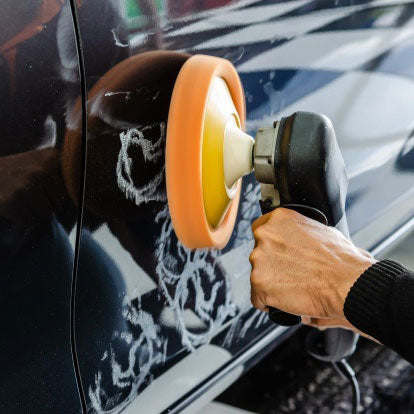Starting a body piercing course is a big step for many students. Some come in with years of fascination with body art, while others simply want a career change that allows them to be creative, independent, and connected with people. No matter your background, it’s natural to feel both excited and a little nervous.
Many students arrive with the same questions:
What are the classes like?
How much practical experience will I get?
Will I feel confident enough to pierce by the end?
Lets break down the behind the scenes of a typical body piercing course. By the time you finish reading, you’ll have a clear idea of what to expect from day one through to receiving your certification.
What the Courses Generally Cover
Infection Control First
Before a needle ever touches skin, your training begins with health and safety. Infection control, sterilisation procedures, and safe workplace practices are not just part of the process they are the backbone of professional piercing.
Expect to learn:
- How infections spread and how to break the chain of infection.
- Correct handwashing techniques and use of personal protective equipment (PPE).
- Sterilisation processes, including autoclave use, maintaining sterility and record keeping.
- How to set up and break down a sterile workstation.
- Waste disposal procedures, including sharps containers and contaminated waste.
Health and safety training ensures that no matter how artistic or skilled you become, every piercing you perform prioritises the client’s wellbeing.
Theoretical Knowledge
Piercing is much more than pushing jewellery through skin. A strong theoretical foundation gives you the confidence to make safe, professional decisions.
During theory lessons, you’ll cover:
- Anatomy and physiology: Understanding nerves, veins, and the structure of skin so you know exactly where piercings can and cannot go.
- Jewellery knowledge: From ball captive rings to labrets, barbells, and dermal anchors, you’ll learn the different jewellery styles, their materials, and which metals are safe for healing.
- Piercing techniques: Step-by-step guides to common piercings such as lobes, nostrils, navels, and eyebrows, as well as more advanced piercings like dermal anchors, septum and industrials.
- Client communication: Learning how to conduct consultations, explain aftercare, and manage nervous or unsure clients.
The goal of this section is to build your confidence so that you understand why piercings are performed a certain way and not just the how.
Practical Skills
Of course, the heart of the training lies in hands on face to face skill building. Practical components are introduced step by step, ensuring you never feel thrown in the deep end.
You’ll experience:
- Live demonstrations: Trainers show the complete process from preparing the station to performing the piercing, all while explaining each movement.
- Guided practice: Students are encouraged to practice needle handling, tool use, and jewellery insertion under supervision.
- Hands-on learning: Once you’re ready, you’ll progress to performing piercings under direct trainer guidance.
By repeating techniques in a structured way, your skills will develop steadily and your confidence grows along with them.
A Supportive Learning Environment
Small Class Sizes
Unlike traditional classrooms, piercing courses are often run with deliberately small groups. This ensures every student has the opportunity to ask questions, get feedback, and receive individual support.
Experienced Trainers
Your trainers are not just your teachers, they’re working industry professionals with years of real-world experience. Many have their own studios, giving you access to insider knowledge you won’t find in textbooks. They share:
- Tips for calming nervous clients.
- Advice on choosing quality jewellery suppliers.
- Insights into running a successful studio.
Growth and practice
Training is about progress, not perfection. Mistakes are expected and part of the learning journey. Trainers encourage you to experiment, practice, and build your technique without fear of failure.
At first, you’ll practice on sponges, fake skins or synthetic models. This allows you to focus on hand positioning, angles, and tool use without the pressure of working on a live person.
Once you’ve demonstrated safe technique, you’ll move onto live models under supervision. Often these are fellow students or volunteers who are fully briefed and consenting.
Building Confidence Gradually
- You’ll start with simpler piercings like ear lobes.
- As your confidence builds, you’ll progress to more complex piercings such as nostrils, navels, or cartilage.
- Every step is observed and corrected by your trainer to ensure accuracy and safety.
By the time you complete your training, you’ll have performed enough supervised piercings to feel confident taking on clients of your own.
Tools, Techniques & Industry Standards
A big part of piercing training is becoming comfortable with the professional equipment you’ll use daily.
You’ll learn to:
- Set up and maintain your workstation: From laying out sterile instruments to ensuring surfaces are disinfected.
- Handle needles, forceps, and other tools: Mastering precision and control.
- Maintain sterilisation logs and equipment testing records.
You’ll also be introduced to industry standards and legal requirements. This varies by state or territory in Australia but often includes:
- Infection control certifications (such as HLTINF005).
- Council health regulations for skin penetration businesses.
- Record-keeping and consent forms for clients.
This ensures that once you’re certified, you’re not just skilled, you’re legally compliant and ready to work.
Ongoing Support After Training
A quality training provider doesn’t wave goodbye once you finish your last class. Ongoing support can make all the difference as you transition from student to professional.
This often includes:
- Access to resources: Training manuals, aftercare sheets, and continued learning materials.
- Career guidance: Advice on setting up your workspace, sourcing equipment, and attracting your first clients.
- Mentorship: Many trainers remain available for questions long after the course ends.
- Networking opportunities: Connecting with peers, joining online groups, and becoming part of the body piercing community.
Having a support network means you never feel isolated, even when you’re just starting out.
What Students Often Say After Training
Many graduates report a mix of emotions:
- Relief that they’ve gained practical experience in a safe, supervised way.
- Excitement about finally being able to offer piercings to clients.
- Appreciation for the ongoing support of trainers and classmates.
Most importantly, students leave with a sense of professional pride. Body Piercing is an art, but it’s also a high-risk responsibility. Completing a course is proof that you can perform safely and skilfully creating a foundation for a long and rewarding career as a body piercer.
Enrolling in a body piercing course isn’t just about learning a new skill, it’s about building the confidence to work safely, professionally, and with pride. From day one, you’ll be immersed in health and safety, theory, and practical training that prepares you for real world work.
With small classes, supportive trainers, and gradual hands-on experience, you’ll leave not only with a certificate but also with the knowledge, confidence, and community connections to begin your piercing journey.
Whether your goal is to work in an established studio or eventually open your own, training is the first step towards a career that blends creativity, technical skill, and personal connection.
So if you’re ready to take your passion for body art to the next level, stepping behind the scenes of a piercing course might just be the best decision you’ll make.

ENROL NOW!
Start your new career! Begin the journey and check out our accredited body piercing courses below:
BODY PIERCING COURSES
Jaz Anna






